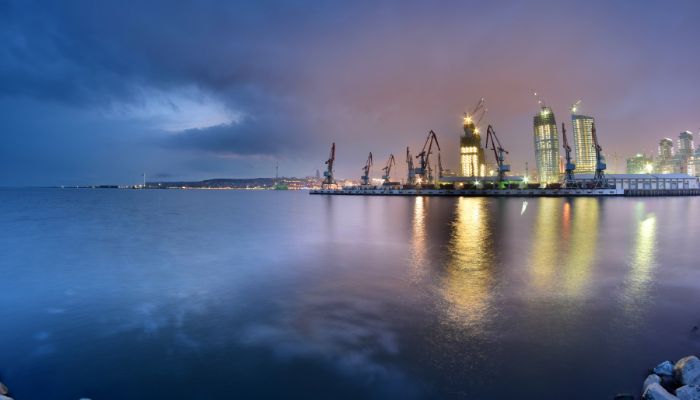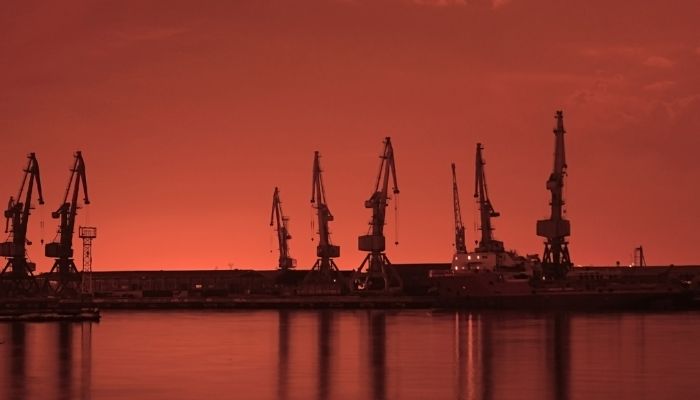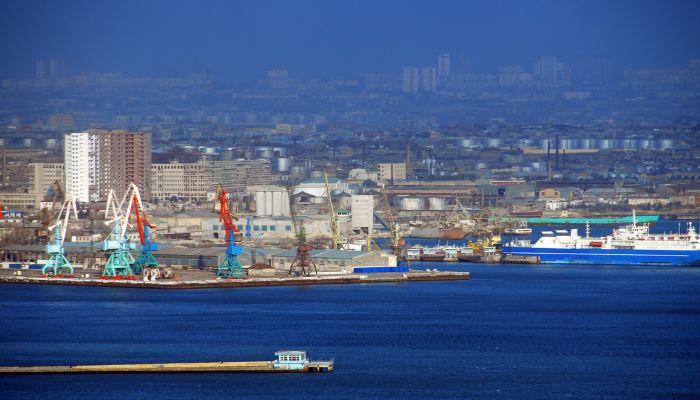

The Republic of Azerbaijan is a transcontinental nation situated at the border of Eastern Europe and the West Asian continent. It is a developing economy and largely dependent on its abundant oil, energy and natural gas resources. It also boasts an expansive agricultural basin that meets domestic and international demands. The nation strives to develop scientific research, technology, telecoms and aerospace sectors.
Goods are transported via seaways and waterways, especially in areas where road connectivity and railways are disputed. However, the nation has direct maritime links with Russia, Iran, Turkmenistan and Kazakhstan. Access to the high seas is offered by the Volga-Don canal.
The main international export commodity is oil and oil products, and major customers are countries bordering the Mediterranean, Black and Marmara seas. The country strives to make the best use of the Eurasian transport corridor.
The Azerbaijan State Caspian Marine Company has a diverse range of operations. Its fleet comprises 70 ships, including 34 tankers, 26 cargo ships and 2 RORO ferries, weighing over 300,000 tonnes.
Today, the country ships around 20 million tons of oil and oil products annually. Additional ferry services are being planned.
Azerbaijan has only one port, the Baku International Marine Trade Port, the biggest facility on the Caspian Sea.
The Caspian Sea allows Azerbaijan to forge important trade connections with neighbouring countries, which support its economy to a great extent.
Baku port is situated on the western coast of the Caspian Sea, around 700 km from Georgia’s Batumi port. It is an ideal seaport, as it is protected by the islands of the Baku Archipelago towards the east and the Abseron peninsula towards the north.
It has been the biggest and busiest port in the Caspian Sea region since its establishment in 1902. It began operations as a two-jetty port with a handful of workers and has developed as a primary gateway for water-borne traffic to the Republic of Azerbaijan.
The modern Baku Port lies at the crossroads of the Silk Road and principal transportation corridors. The stakeholders wish to transform it into an important intermodal logistics hub in Eurasia. It would also contribute to sustainable growth and the diversification of the nation’s economy.


It is an essential point of transit for trade between Asia and Europe. Russian rivers are navigable from April to November and serve ships carrying freight from western European countries and the Mediterranean to the Russian interiors.
Its importance has increased manifold due to the growth of the oil trade in the region and the spur of offshore drilling businesses in the past two decades.
Oil has always been abundant in the Baku region since the 15th century. People always used oil from surface wells for lighting their lamps. Hence, for centuries, oil has sustained the people of Azerbaijan.
Towns near the port are drilling centres connected to local refineries via a network of pipelines. Oil is piped to Batumi port and even shipped via tankers across Caspian to Volga rivers.
Close to the bustling petroleum industry, Baku has grown into a centre for manufacturing oil industry equipment and machinery. Other Port of Baku industries includes shipbuilding and repairs, food processing, chemicals, construction materials, and the manufacture of electrical machinery.
Historical evidence highlights the presence of human settlements near the port area before the period of Christ. However, written records mention it for the first time from 885 AD onwards. After the 12th century, the Shirvan Shahs made it their capital city, and it was plundered by Mongols in the 13th and 14th centuries.
In 1723, Peter the Great captured the area, but it was won by Persia by the late 17th century. In 1806, it was captured by Russia and became the capital of independent Azerbaijan in 1920.
Commercial oil exploration began soon, and in the 20th century, its newly found oil field remained the Soviet Union’s biggest resource until the 1940s.


In the late 20th century, most oil reserves had been exploited, and underground drilling operations began. After the situation in the country stabilised, foreign oil companies secured rights to explore new sites near Baku port. Several new refineries came up, and oil derricks could be seen in the Gulf.
The region surrounding the port has a rich history. Close to the port was an ancient old town fortress. It was repaired, and other walls were added to it by the Russians in 1806.
The old town is quite beautiful and has a mesmerising feel. Its narrow alleys, cobbled streets and mosques take one back in time. It houses many UNESCO World Heritage Sites like the Palace of Shirvan Shahs and the tower of Kyz-Kalasy.
The modern-day city has a traditional feel and temper. It is enclosed by hills and boasts a picturesque waterfront with an adjacent park. Many industrial regions are situated in the eastern and southwestern parts of the city. It covers the whole of the Abseron peninsula and offshore islands.
The Port of Baku has a total handling capacity of 15 million tons of general cargo and 100,000 TEUs annually. It covers 400 hectares and has 13 berths with a total length of 2254 metres and a maximum depth of 7 m.
Storage areas cover 10,000 m2, and the open storage areas cover 56,000 m2. It also has 2 closed warehouses and a 12,500 m2 container handling area.


The port has 4 terminal tractors, 2 container loaders, 16 forklifts, 3 gooseneck tractors, 3 trailers, 5 movable loaders, 2 reach stackers and an all-terrain crane.
The port has three operational terminals which handle over 2400 vessels each year.
The ferry terminal serves passengers, automobiles, and cargo shipped between Baku and ports of Iran. Each ferry can carry around 28 wagons or 40 trailers and more than 200 passengers, and 55 cars.
It is an important stop on the Tracea-Restoration of the Historic Silk Route project. The Port of Baku might see a drastic rise in cargo and passenger traffic through the ferry terminal over the coming years.
Capable of handling 30 million tons annually, the ferry terminal and its adjacent berths allow wagons arriving at the port to enter the ship directly. This procedure is done via two ferry wharves, using a linkspan bridge connected to rail lines. Intermodal Transport Units apart from wagons, like trucks and passenger cars, can be loaded and unloaded from vessels at this facility.
The port’s RORO facility accommodates 60,000 automobiles and 1.8 million tons annually. ITUs, apart from rail wagons, are offloaded from/to RORO/RoPax ships at this facility. Two RORO berths are used for operations. One of the berths has a side ramp, and the other one caters to vessels with a side and also a rear ramp, having a hydraulic berth infrastructure. Additionally, passengers can go on RoPax ships via these berths.
The general cargo terminal serves vessels carrying containers, bulk and conventional cargo. It has seven berths totalling over 1100 metres, out of which one is intended to handle heavy-weight cargo. Four berths are equipped with rail lines and six new cranes with different specifications over the railways. One berth is specifically dedicated to RORO.
Different types of cargo, including containers and breakbulk, can be handled and stored at this facility. About 7 million tons of cargo pass through the terminal annually.
The terminal has 16 port cranes to handle up to 16 ships at once. It also has 24,000 m2 of open storage and 10,000 m2 of covered warehouse space.
Close to the general cargo terminal is the container terminal with a capacity to handle about 100,000 TEUs annually. It has 2,000 square metres of warehouses and is connected to the country’s main railway system.
The oil terminal is situated around 35 kilometres to the east-northeast at Dubendi. It handles oil from neighbouring countries like Kazakhstan and Turkmenistan, which is shipped to the ports and harbours of the Black Sea and also Asia.
It has two docks which can accommodate four tankers simultaneously. The oil terminal handles 15 million of oil annually. The terminal is also equipped to handle contaminated water and accidental oil discharges.
The port’s fleet comprises over 20 vessels in the Port Fleet facility. It also acts as an arrival or departure point for cruise passengers.
The passenger terminal has a 344 metres wharf to accommodate ships travelling between the Caspian sea ports. People working on oil rigs and drilling platforms in neighbouring regions also utilise it to reach their duty stations.
You might also like to read-
Disclaimer: The authors’ views expressed in this article do not necessarily reflect the views of The Marine Learners. Data and charts, if used, in the article have been sourced from available information and have not been authenticated by any statutory authority. The author and The Marine Learners do not claim it to be accurate nor accept any responsibility for the same. The views constitute only the opinions and do not constitute any guidelines or recommendations on any course of action to be followed by the reader.
The article or images cannot be reproduced, copied, shared, or used in any form without the permission of the author and The Marine Learners.










We believe that knowledge is power, and we’re committed to empowering our readers with the information and resources they need to succeed in the merchant navy industry.
Whether you’re looking for advice on career planning, news and analysis, or just want to connect with other aspiring merchant navy applicants, The Marine Learners is the place to be.